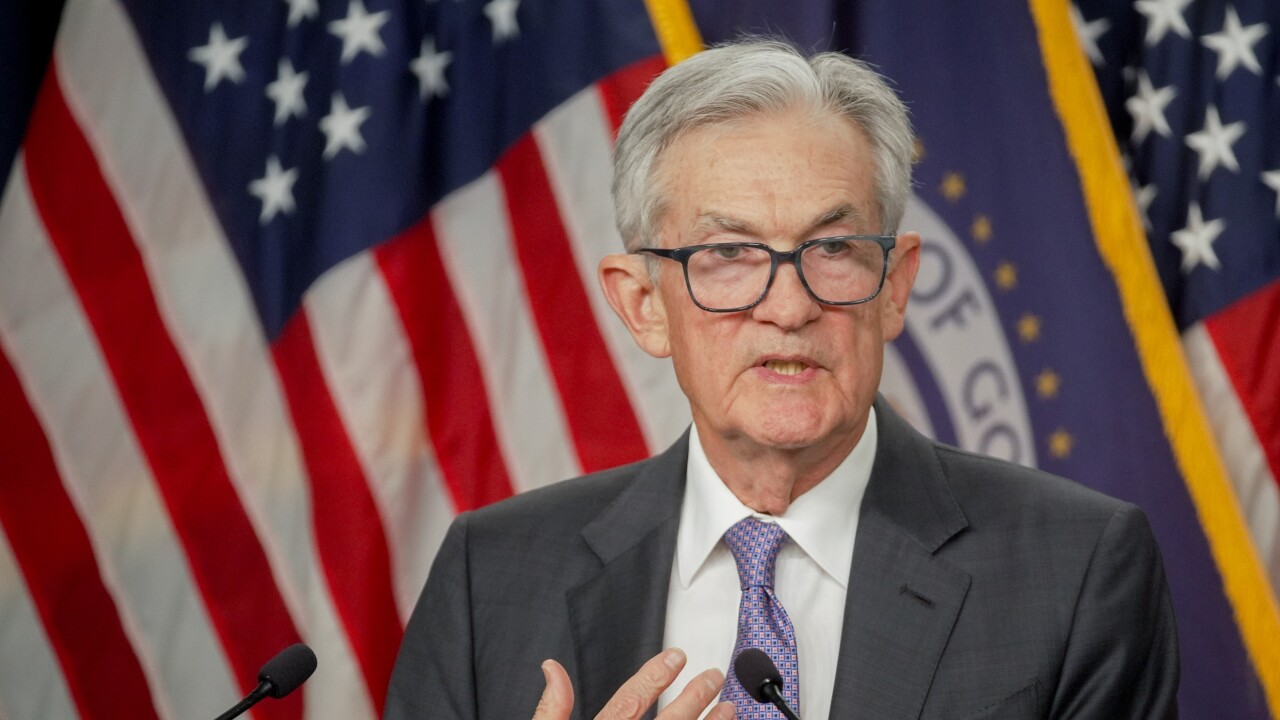The all-in-one card market has been a dead end for many years, with products like
Even with this strategy, London-based
Curve leverages

“Curve is representative of a wave of innovative fintechs in the U.K.,” said James Black, counsel at Hogan Lovells International. “The introduction of PSD2 and Open Banking is leading to the advent of 'dis-intermediators' and digital challengers. But, unlike challenger banks such as Starling and Monzo, the new breed of fintech entrepreneurs aren’t interested in replacing traditional banks, which they see as essential but expensive infrastructure. Their business models are, instead, based on access to customers’ data and accounts.”
Of course, even in this environment it is possible to be thrown a curveball. Shortly after Curve announced in January that American Express cards would be supported in its open beta, Amex announced that it had
As with its predecessors, Curve's appeal must be balanced against its limitations. Past all-in-one cards suffered from a steep cost of entry and questions about whether their business model would survive the U.S. EMV migration.
Curve's cards "have spending caps, which aren’t related to — and may be smaller than — the cardholder’s credit limit for their underlying cards,” said Zilvinas Bareisis, senior analyst at Celent. “Also, under Section 75 of the U.K. Consumer Credit Act, credit card issuers offer protection to customers on purchases between £100 and £30,000 if things go wrong. But this doesn’t apply to credit card purchases made via third parties such as Curve.”
Curve cardholders enjoy chargeback protection against fraud, and, to provide coverage against issues such as non-delivered or faulty purchases, Curve has introduced a buyer protection policy. But it provides cover for only up to 120 days, compared to six years for the Consumer Credit Act, and has more complex claims processes.
Those drawbacks may be counterbalanced by the benefits consumers get from combining their transactions through a single card, Bareisis said. “Curve is an attractive proposition for consumers. It allows them to track and manage their spending across all their Mastercard and Visa cards, move purchases from one card to another up to two weeks after the fact, and enjoy low FX fees for foreign purchases," he said.
For Curve, the goal is to become like Amazon in that it is a curator of financial services rather than a fully-fledged bank.
“We think customers should keep their money with their bank, as they are good at protecting it, and we don’t want to be a bank,” said Curve CEO Shachar Bialick. “We want to be an Amazon, providing Curve users with best-of-breed products and services via a single interface. This will reduce the cost of customer acquisition for our partners plus their KYC and AML risks, as we already have the customer information. We’ll make our money by brokering and distributing our partners’ products to our users.”
Curve offers a mobile app and a Mastercard-branded card to which users associate their existing credit and debit cards. When customers use their Curve card in a store, the purchase is applied to one of the cards residing in their Curve app.
Curve offers free accounts with two premium tiers: £14.99 for Metal Mastercards and £9.99 for Black Mastercards. The tiers offer a range of additional benefits including worldwide travel insurance.
Curve shares merchant category codes with its users’ issuers so users receive rewards. “We plan to support card-linked offers from our customers’ issuers,” Bialick said.
Curve launched a beta program in 2016 and finally rolled out its cards in February 2018, with over 100,000 users of its Mastercards as at December 2018.
“Since our commercial launch in February 2018, over £340 million worth of purchases have been processed on our platform and 10.5 million transactions carried out,” Bialick said.
Only Mastercard- and Visa-branded cards can be loaded into Curve’s app. Curve is available in 30 European Economic Area countries, and is opening offices in France, Germany, Italy, Poland, Portugal and Spain. It foresees expanding to the U.S. by the end of 2019.
Curve’s partners include Wirecard, Investec, Banco Sabadell, Mastercard and Santander, which is also an investor in Curve.
James Thorpe, Mastercard’s head of communications for U.K, Ireland, Nordics and Baltics, said Mastercard has a focus on working with fintechs.
“U.K. challenger banks are mostly Mastercard issuers,” he said. “What Mastercard offers fintechs like Curve is the ability to issue cards in multiple countries, without requiring physical presences in different markets. We also help fintechs develop their card programs before they acquire an e-money or bank license, to accelerate the process of card issuance. Otherwise, fintechs would have to wait a long time before their cards could come to market.”
In 2019, Curve plans to offer Apple Pay, Samsung Pay and Google Pay plus domestic/cross-border P2P transfers to its members. Bialick says Curve’s road map includes offering installment loans and refinancing deals with credit card partners.
“We can see our customers are paying high interest rates on revolving loans from cards connected to their Curve account,” he said. “So we can suggest they split the purchase into multiple installments at a lower interest rate paid to a different issuer.”
Curve will introduce a beta version of installment loans with a partner by the end of Q2 2019. “We could also offer our users instant zero percent 12-month refinancing deals for their credit card debt from a partner,” Bialick said.
Starling already offers installment loans which are integrated with its checking accounts in the U.K. Its customers can apply for installment loans within their Starling app before they make a large purchase, or after they have already bought something.
“Offering installment loans makes sense as it’s complementary to Curve’s value proposition,” said payments industry expert Francesco Burelli. “As a transaction aggregator, it makes sense to move from being a card-consolidating interface to a more financially attractive platform. Consumer lending, both in the form of revolving credit as well as installment loans, is a profitable, resilient revenue source.”
But even with all of these features, Curve has a challenging path ahead of it.
“Similar U.S. all-in-one cards to Curve haven't got much adoption,” said Rick Oglesby, president of AZ Payments. “In the U.S., there are several ways to make products like this work. One involves very expensive pieces of plastic that become cost-prohibitive, such as the now-defunct
"It's tough to make a profit on that," Oglesby added. "Users aren't inconvenienced by having more than one card in their pocket, so they aren't willing to pay much for a service like this. The service provider must put lots of value into their platform to make it worthwhile for consumers, and that's expensive and generally not profitable.”





